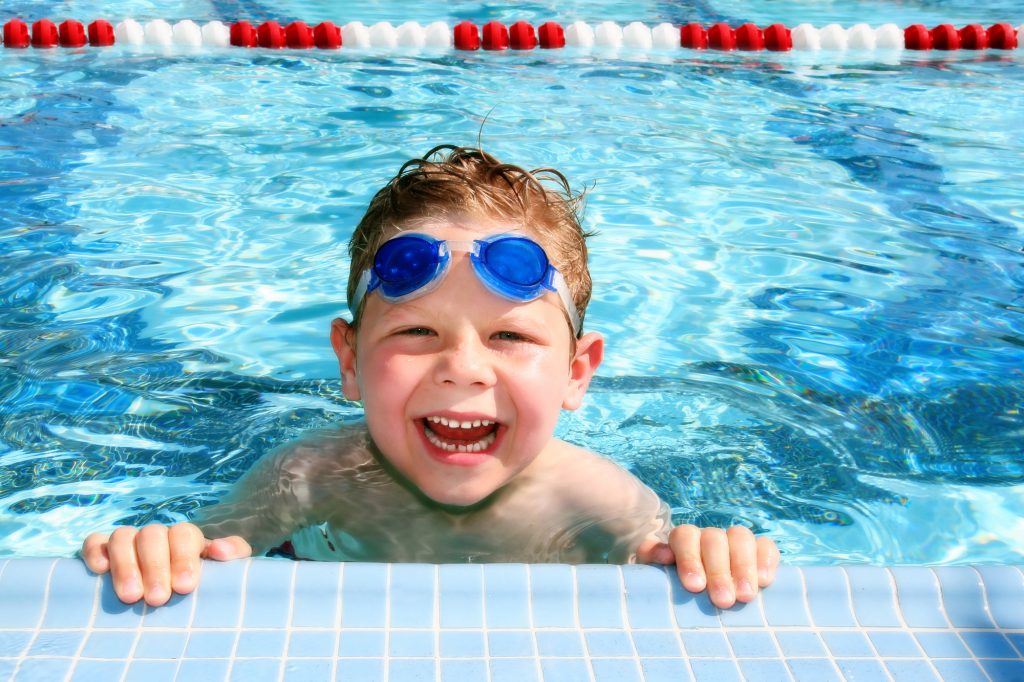10 Tips for Teaching Your Child How to Swim
Imagine it’s beautiful summer day.
You’ve decided to keep your new year’s resolution of spending time with your family by taking your child swimming.
So you gather up the sunscreen, the goggles, the floaties, the pool noodle, the beach ball, the towel, the snacks, and the water.
You wrestle your child into their swimsuit and search the entire house for the other flip-flop.
You fit everything into your car like a Tetris puzzle and drive to the community pool. Then feel something like a pack-mule as you haul everything to the front desk. You then have to set everything down as your search for your wallet only to pick it all up again to take the last trek down to the pool.
You’ve finally made it.
But, where is Junior?
Over there, crying on the stairs. Because he is scared to death of the water. And that’s when you know, it’s time to teach your child to swim.
Learning how to swim is an important skill that every child should know how to do.
Read on to learn 10 tips for teaching your child how to swim.
Teach How To Swim Slowly
For a child, learning how to swim can be scary. Don’t be afraid to go slowly and at the child’s pace. You don’t want to make it traumatic for them. It will only prolong the process.
Let the child lead the lessons and don’t force anything on them. Give them opportunities to succeed without being too pushy.
There really is no rush.
1. Teach them to Love the Water
This may seem easier said than done. A lot of children have a fear of water.
Start slow.
Sit by the pool with them on your lap. Maybe pour some water on their toes until they become brave enough to splash their toes in the water.
When they get used to that, let them sit on the top step. Slowly let them acclimate to playing in the water.
2. Make Water Activities Fun
Teaching the child to learn how to swim is the end goal, but that doesn’t mean that every swim outing needs to be a serious lesson.
Make their first interactions with water fun. Play games and sing songs with them. Play with water toys to get them used to splashing around in the water.
3. Start With a Floatation Device
It’s always a good idea to start with a floatation device. Puddle Jumpers is a great one that is coast guard approved and will flip the child over if they are face down.
This will help them become confident in the water no matter how deep it is.
4. Blow Bubbles in the Water
One of the scariest things to do for a child is to put their face in the water. You can start slowly by showing them how to blow bubbles.
This is a slow introduction to getting their faces wet but still makes it fun for little kids to try.
5. Teach them to Go Underwater
After they have mastered blowing bubbles, see if you can get them to go completely underwater.
It will probably just be for a milli-second the first few times they try. And that’s ok. The more they try it, the more comfortable they will become with going underwater.
After they get used to dunking their entire head, then you can start to give them challenges such as counting to three before they come up for air.
6. Dive For Toys
When they are comfortable with going underwater, then you can start to teach them to dive for toys in the shallow end.
Get some brightly colored pool toys that will sink. Toy rings are our favorite to start with.
Drop the rings and let them slowly fall. Encourage the child to grab them before the tough the bottom of the pool.
As the child gets more confident, toss the toys a little farther away, but always stay close enough to help if they feel overwhelmed.
Goggles are also a must for this activity. Goggles will allow the child to be able to see the rings and will be more successful in this activity.
7. Back Float
The first basic swimming skill that should be taught to a child is how to back float.
Hold the child up flat on the water and teach them what it feels like to float on top of the water. Teach them to hold their chin up and to keep their tummies up.
When they feel comfortable slowly try removing your support, but always staying close by. The goal should be for the child to be able to float on their back whenever they need to.
8. Kicking
After they have mastered the back float, you can start teaching them basic swimming strokes. Start with kicking.
Kicking in water is fun. Start having them sit on the steps and kick their legs. Then pull them around on a board laying tummies down and have them practice kicking.
9. Strokes
When they are comfortable kicking, add the arms.
Again, have them start on the stairs. Sit them on the steps and practice arm strokes. When they have that down, have them put their faces int eh water and add the breaths.
When they get the arms and the breaths synchronized, let them put the everything together.
Again, start slow and never leave them while they are learning.
10. Jump Off the Side
The ultimate goal is to have your child comfortable enough to jump off the diving board and swim to the side.
Start in the shallow and have them jump into your arms. Then take a step back and have them try to jump farther out.
After they jump to you, see if they can swim back to the side.
Slowly work your way up until they are comfortable jumping in the deep end and swimming to the side.
Get Swimming
Teaching a child to swim takes time and patience. In fact, it very well may take you an entire summer to get your child completely comfortable in the water.
But that’s ok.
Because having a child that is confident on the water is priceless. When they are older, you will need to be comfortable enough to send them to the local pool with their friends and know they will be ok.
So, pack up your car again, load everyone up, and head to the pool. I promise it won’t be wasted time.
Check out our blog if you need any other tips.





